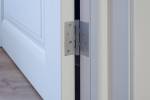Today’s lesson: Green schools benefit all
The idea behind No Child Left Behind was to increase student performance. The effectiveness of the program has been mixed, but some of the teachers I know felt like it was more about test scores and not so much about real learning.
If the goal is to improve the educational experience and to help young people thrive, there is one effective solution that is catching on around the U.S.: green schools.
Studies have shown that many schools across the country are unhealthy, leading to increased absenteeism and illness. These conditions also bring down test scores. No amount of testing can alleviate the effects of poor building design.
In the U.S., there are approximately 60 million students, faculty and staff in schools. According to the General Accounting Office, more than 25 percent of students attend schools considered to be below standard or dangerous. This is not counting schools that are simply below standards for important things like air quality due to inadequate ventilation. In fact, the GAO found the air unfit to breathe in almost 15,000 schools!
Green schools are inviting, healthy spaces that are more comfortable to students and teachers alike. They increase productivity and learning. They have ample natural light, high-quality acoustics and air that is safe to breathe. They can result in fewer sick days, lower operating and maintenance costs, reduced emissions, improved teacher retention and, of course, a greatly enhanced learning environment that works.
As more green schools are built, their benefits are becoming increasingly clear. A recent study of the cost and benefits of green schools for Washington state estimated a 15 percent reduction in absenteeism and a 5 percent increase in student test scores. Another study found a 19 percent increase in average student oral reading fluency scores for elementary school pupils after they moved from a traditional school to a new green one.
These are just a few examples of the growing body of evidence that makes an undeniable case in favor of green school construction. Fortunately, there is a clear path for any school district that decides to go green. The most established standard for green building is the U.S. Green Building Council's LEED green building rating system. This system was developed in an open, voluntary, consensus-based process by building industry leaders from across the county, all members of the nonprofit organization.
The strength of Leadership in Energy and Environmental Design is that results are immediate and measurable. The very important testing and commissioning process is built into the program to assure that dollars spent toward a high-performance green school are not in vain. Unfortunately, this important step is sometimes left out in an attempt to save money. To truly maximize value, minimize operating costs and, most of all, provide the best environment for students to learn, nothing short of LEED certification should be accepted.
A major consideration in any conversation about our educational system is cost. All this talk about green schools is wonderful, but can we afford them? The answer is undeniably yes. In fact, it is no longer considered financially responsible to build anything except green schools. As more and more green schools are built across the country, the emerging picture shows that often there is little or no additional cost for green school construction, but there are enormous financial, social and educational benefits.
A detailed report entitled "Greening America's Schools: Costs and Benefits" by Gregory Kats of Capital E studied 30 green schools from across the county. The average premium for LEED certification was less than 2 percent and in some cases the cost was comparable to standard construction methods. The financial benefits of these buildings run more than 20 times higher than the average premium. In other words, an investment of around $3 a square foot yields financial savings of around $70 a square foot. This is an extraordinarily case of win-win if I ever saw one.
The U.S. Green Building Council has created a new Web site specifically about green schools at www.build greenschools.org. There you will find a downloadable copy of the report mentioned above, as well as case studies of actual projects and other valuable information.
I encourage everyone with an interest in our future to learn more about the benefits of green schools. I don't even have kids and I'm excited about it! The vision of new generations of students learning in healthy, efficient and comfortable spaces is powerful. The best part is that it is not a far off dream, but an actual reality. Not only do we help children, we save money and help the environment as well.
The new mantra for America's educational future should change to "No Child Left Ungreen."
Steve Rypka is a green living consultant and president of GreenDream Enterprises, specializing in renewable energy, green building, alternative transportation and lifestyle choices for both residential and commercial clients. The company is committed to helping people live lighter on the planet. Rypka can be reached via e-mail at steve@greendream.biz. More information relating to this column is posted at www.greendream.biz.



















